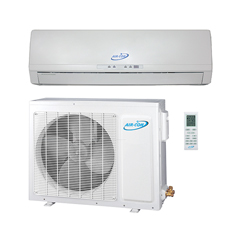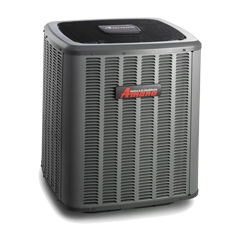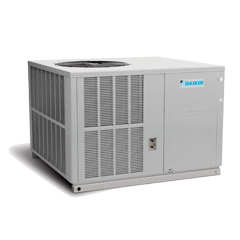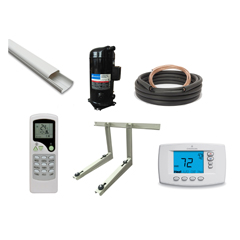MINI SPLIT SOLUTIONS
MINI SPLIT SOLUTIONS
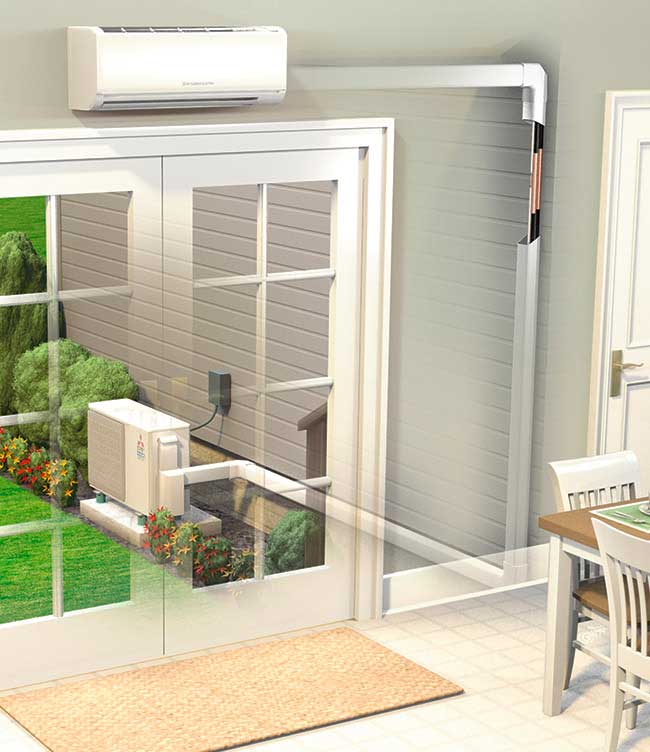
Ductless, mini split-system air-conditioners (mini splits) have numerous potential applications in residential, commercial, and institutional buildings. The most common applications are in multifamily housing, garages, or as retrofit add-ons to houses with “non-ducted” cooling or heating systems. They can also be a good choice for room additions and small apartments, where extending or installing distribution ductwork (for a central air-conditioner or heating systems) is not feasible.
ADVANTAGES
The main advantages of sometimes referred mini splits, split systems, multi-split systems, or split-ductless systems, are their small size and flexibility for zoning or heating and cooling individual rooms. Many models can have as many as four indoor air handling units (for four zones or rooms) connected to one outdoor unit. The number depends on how much heating or cooling is required for the building or each zone (which in turn is affected by how well the building is insulated). Each of the zones will have its own thermostat, so you only need to condition that space when it is occupied, saving energy and money. Ductless mini split systems are also often easier to install than other types of space conditioning systems
Like central systems, mini splits have two main components: an outdoor compressor/condenser, and an indoor air-handling unit. A conduit, which houses the power cable, refrigerant tubing, suction tubing, and a condensate drain, links the outdoor and indoor units.
They Save You Money
One of the biggest reasons why homeowners switch to ductless cooling and heating is overall cost savings. In recent years, utility costs across the country have skyrocketed. When a home’s temperature depends upon an inefficient system, monthly bills can quickly climb out of control. Ductless systems operate on less power – they are smaller than traditional forced-air systems, and because the temperature-controlled air is delivered directly into a room, there is no loss in efficiency. Multi-split systems also allow homeowners to create “zones” in their home, which means they no longer have to cool or heat rooms that aren’t occupied.
They Improve Indoor Air Quality – Happy Breathing!
Often times, the quality of indoor air can actually be lower than the quality of outdoor air. With traditional HVAC systems, air ducts must be professionally cleaned on a regular basis, and even after cleaning, dust and allergens are left behind. Ductless systems, on the other hand, offer multi-stage filtration that can drastically reduce dust, bacteria, pollen, allergens and other particulates in the air.
They Are Quick and Easy to Install
Installing a traditional, ducted system can take several weeks and disrupts daily activities in the home. Ductless systems are far less invasive to install, and depending upon the number of indoor and outdoor units required, can be up and running in as little as one day.
Multi-split systems run on small pipes that require a mere three-inch hole. That means homeowners don’t have to worry about rebuilding walls or ceilings around ductwork and there is no loss of precious square footage.
Additionally, ductless systems take advantage of advances in chemistry to reduce effects on the environment. Ductless systems use a refrigerant called R410A, which is known for its zero ozone depletion potential. This means the system will have less impact on the environment throughout its lifecycle.
Ductless cooling and heating systems are energy efficient, environmentally friendly and completely customizable. They offer homeowners the ability to cool and heat specific zones of their home to the exact temperature they desire, providing consistent and exceptional year-round comfort.
Approx. Room Size
12,000 BTU 400-500 SQ FT.
18,000 BTU 600-700 SQ FT.
24,000 BTU 800-900 SQ FT.
INVERTER
Traditional cooling and heating solutions are a bit slow on the uptake, blasting freezing-cold air one minute and then nothing the next. So, what gives? Temperature delivery should be more streamlined with less temperature swings. That’s where INVERTER technology comes in.
Part of the ductless compressor unit, INVERTER technology selectively changes the motor speed according to home temperature demands. This variable compression speed means a smoother, more streamlined approach to temperature delivery that’s also lighter on the pocketbook.
Total Comfort Control
Traditional systems use a fixed-speed compressor, which cycles the unit on and off whenever the room dips below desired temperatures. This system relies on an all-or-nothing philosophy—with the compressor running at either zero or 100 percent. This can lead to unpleasant temperature swings as the system strains to maintain a constant temperature.
Inverters, on the other hand, are always running in the background, adjusting the compressor speed in real time. By ramping up power to the compressor when needed, an inverter provides a more accurate, on-demand approach to temperature control. If your room temperature’s already a comfortable 72 degrees, for example, an inverter may slow the compressor’s engine to a crawl. If your room’s cooking at 104 degrees, the inverter will push the compressor into high gear, keeping you out of the hot seat.
Start-up Current
From an energy perspective, constantly cycling a compressor on and off can be a costly endeavor. Unlike INVERTER-driven systems, fixed-speed compressors can’t ramp up gradually. While INVERTER systems are always on, running at a fraction of full speed is far more efficient in the long run. It’s estimated that standard systems draw 3-4 times as much power on start-up versus an INVERTER-driven system.
Takeaway
Inverters work overtime to deliver personalized comfort and energy efficiency. With smooth, streamlined temperature delivery without dramatic swings, inverters are the high end of the cooling and heating world. With INVERTER technology, the dream just got a little bit closer.
This article and its content are sponsored by Mitsubishi Electric US Inc., Cooling & Heating Division.


